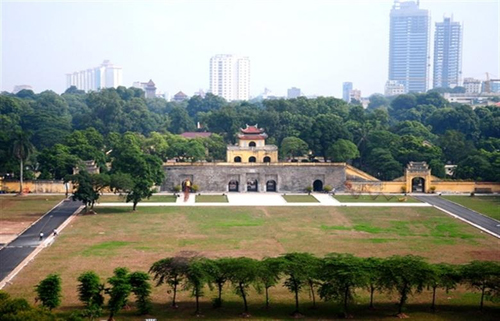 |
The site encompasses the No. 18 Hoang Dieu archaeological site and the central axis of the Hanoi ancient citadel which are nestled in the Forbidden Area in the heart of Thang Long Imperial Citadel.
The area was the centre of the Dai La citadel under the Chinese Tang domination (7 th -8 th century).
It was called the Dai La citadel under the Dinh-Le dynasties (10 th century), Thang Long, Dong Do, and Dong Kinh under the Ly dynasties (1009-1226), the Tran dynasty (1226-1400), the Early Le dynasty (1428-1527), the Mac dynasty (1527-1592), and Le Trung Hung (1593-1789) before becoming the Hanoi citadel under the Nguyen dynasty (19 th century).
Covering a land area of 47,700 sq. m, the site is enclosed by Hoang Van Thu road to the north, Bac Son road to the south, Hoang Dieu road to the east and Doc Lap road to the west. From December 2002 to March 2004, archaeologists excavated numerous artefacts on 19,000 sq. m of the site, exposing layers of cultures of different dynasties which reigned in Vietnam and proving that Thang Long Imperial City played a key role as a political centre throughout 1,300 years.
Architectural vestiges of palaces, pavilions, and the foundations of architectural structures of the Imperial Citadel have also been revealed.
At the site, scientists found a cluster of architectural structures built on land areas in rectangular and polygonal shapes, which were arranged in line with a city’s standards.
They unearthed a great deal of decorative objects placed on the roofing of architectural structures to provide proof of the ancient Vietnamese people’s artistic skills in constructing big and magnificent works.
Those decorative objects included an earthen phoenix head dating from the 11 th -12 th century, an earthen dragon head from the 12 th century, earthen tube roof tiles with Bodhi tree leaf and dragon decoration dated from the 12 th century.
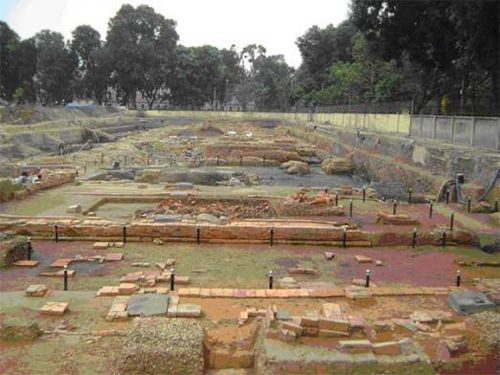 |
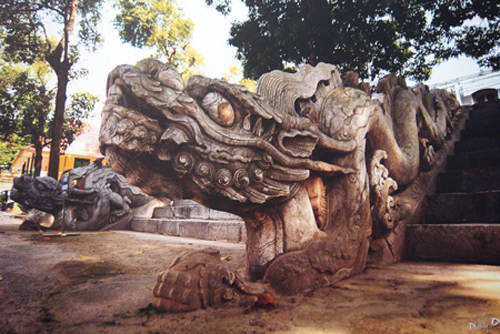 |
At the 18 Hoang Dieu site, archaeologists unearthed many precious ceramic and glazed terracotta items, architectural materials, jewellery, weapons, and metal artefacts, of which many were personal objects of the kings and the royal families.
They also found a cannon weighing 100kg with a length of 1.2 m. It was carved with the words, “Tu dai sung nhat hieu” (literally translated as “The first cannon among four big cannons”).
A system of ancient wells was exposed, including two believed to exist in the Dai La era, two built under the Ly dynasty, two under the Tran dynasty, and six under the Le dynasty. These wells have similar shape and size as those found in the forbidden citadels in Japan , China and the Democratic People’s Republic of Korea .
The No. 18 Hoang Dieu archaeological site has supplied clear evidence of the site’s important role throughout the nation’s history, at least nearly 1,000 years, from 1010 to 1789.
Situated to the east of the 18 Hoang Dieu archaeological site is Hanoi ’s ancient citadel area - the remainder of the central axis of the Vauban building.
The Vauban-styled building was built in the heart of the old Thang Long Citadel by King Gia Long in 1803. The building, with a perimeter of 4km, served as the headquarters of the Bac Thanh and the stop-over palace for the King during his visits to the north.
At present, there sit the surrounding walls of the stop-over palace which were built under the Nguyen dynasty in the 19 th century.
In the centre of the ancient citadel lies the foundation of Kinh Thien palace which was constructed under the Early Le dynasty (1428).
Other construction works which still remain in the Hanoi ancient citadel were mostly built from the 19 th century afterwards.
Walls and almost all gates of the Hanoi ancient citadel were built by the Nguyen dynasty in early 19 th century when Thang Long was the headquarters of the Bac Thanh and the King’s stop-over palace.
Many buildings inside the citadel were constructed by the French colonists during the 1880’s after they occupied Hanoi .
There are also some important buildings built after 1954, which served as the headquarters of the Defence Ministry until 2004.
The most important existing remains of the Kinh Thien Palace are its foundations and the stone steps with a handrail carved in the shape of a dragon, called the dragon's entrance.
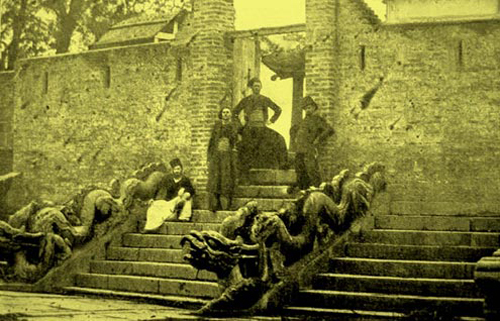 |
| The Kinh Thien Palace |
Doan Mon, the southern gate, was the main entrance to Cam Thanh (the Forbidden Area). The gate was built by the Early Le dynasty in the 15 th century and was later upgraded in the 19 th century.
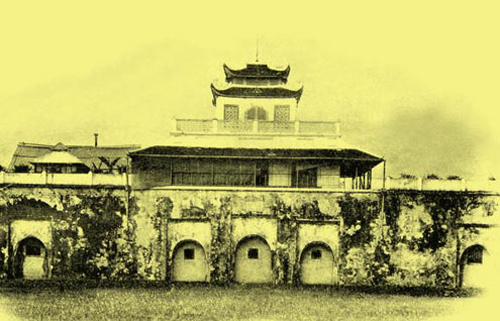 |
| The Doan Mon Gate |
The Ky Dai, flag tower, was built in 1805, the same time as the Vauban-styled citadel.
It was built on the former foundations of the Tam Mon, the outer gate of the Forbidden Citadel during the Le dynasty. It is among the last remaining intact structures from the Nguyen dynasty.
The tower, built in brick, has a square base with three storeys on top of it, each one progressively smaller.
It is 33.4 m high and has a 54-step spiral staircase leading from the bottom to the top of the tower where there is a 3.1 m-high observatory with a rectangular doorway on each side and a 40cm diameter flagpole on the top.
The Hau Lau, Princess Pavilion, was built in 1821, but was destroyed at the end of the 19th century. The remaining structure was rebuilt by the French.
Bac Mon, the northern gate, was built in 1805 and is the only remaining out of the five gates of Hanoi citadel from the Nguyen dynasty. It is designed in the trapezium architectural style, with each side sloped at an angle of 15 degrees. Above the gate is a two-storey observatory tower with a curved roof and the traditional spearhead.
The external wall was built in 1805 running from Doan Mon (southern gate) to surround the internal palace, where the Nguyen Kings to work and rest when they visited the north.
At present, the eight gates of the palace still remain and were recognised as relics in 1925. Between 1954 and 2004, the Palace served as the headquarters of the High Command of the Vietnam People's Army.
Relics from the Thang Long royal citadel have been recognised as a world cultural heritage by UNESCO and have brought honour and pride to every Vietnamese citizen as part of the nation’s cultural history.










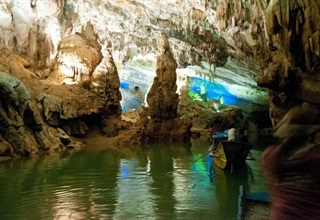






COMMENTS